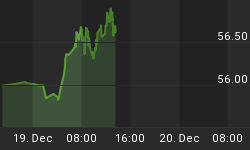Fresh on the heels of a glowing existing homes sales report comes news of an unexpected plunge in pending home sales. Economists in the Econoday survey expected a 1.1% increase. Instead, the pending home sales index plunged 2.8%.
Just when existing home sales seemed to be showing lift the pending home sales index, which tracks initial contract signings, is down 2.8 percent in the January report. This points to weakness for final resales in February and March.
The West is the culprit in January's data, with contract signings down 9.8 percent in the month for year-on-year contraction of 0.4 percent. The Midwest is also weak, down 5.0 percent in the month for 3.8 percent on-year contraction. The South and the West both show no better than low single digit monthly and yearly gains.
Adding to the bad news is a sharp downward revision to the December index, now at plus 0.8 percent vs an initial 1.6 percent. This hints at less strength for February existing home sales, sales that proved strong in last week's January report which however is now a memory. This setback for resales follows last week's sharp downward revision for December new home sales and together they point to a housing sector where growth is suddenly struggling.
NAR Blames Tight Supply
Mortgage News Daily reports Highest Home-Buying Demand in Years Stifled by Tight Inventory.
Tight inventories are again being blamed for a downturn in home sales, this time January's ones. The National Association of Realtor's® (NAR's) Pending Home Sale Index (PHSI) declined by 2.8 percent from December, reaching the lowest level in a year. The PHSI is a forward-looking indicator based on signed contracts for home purchases. Those contracts are generally expected to turn into completed sales in about 60 days.
The January PHSI dipped to 106.4 from an upwardly revised 109.5 in December. The December index had originally been reported at 109.0. The index remains 0.4 percent higher than it was in January 2016, but is at the lowest level since then.
This index is beginning to exhibit the same kind of volatility that has marked new home sales in recent months. The index gained 1.6 percent in December, only partially recovering from a 2.5 percent downturn in November.
The January downturn was unexpected. Analysts surveyed by Econoday were looking for a strong kick-off for the new year, with predictions ranging from 0.3 to 1.2 percent gains. The consensus was on the high end of those estimates at 1.1 percent.
Lawrence Yun, NAR chief economist, says home shoppers in January faced numerous obstacles in their quest to buy a home. "The significant shortage of listings last month along with deteriorating affordability as the result of higher home prices and mortgage rates kept many would-be buyers at bay," he said. "Buyer traffic is easily outpacing seller traffic in several metro areas and is why homes are selling at a much faster rate than a year ago. Most notably in the West, it's not uncommon to see a home come off the market within a month." NAR's report on existing home sales released last week reported a typical marketing period of 50 days in January compared to 64 days in January 2016.
According to Yun, interest in buying a home is the highest it has been since the Great Recession. Households are feeling more confident about their financial situation; job growth is strong in most of the country and the stock market has seen record gains in recent months. While these factors bode favorably for increased sales in coming months, buyers are dealing with challenging supply shortages that continue to run up prices in many areas.
"January's accelerated price appreciation (NAR put the increase at 7.1 percent year-over-year) is concerning because it's over double the pace of income growth and mortgage rates are up considerably from six months ago," said Yun. "Especially in the most expensive markets, prospective buyers will feel this squeeze to their budget and will likely have to come up with additional savings or compromise on home size or location."
Yun Silliness
Curiously, Yun claims home are selling at a faster pace although sales collapsed in November and then again in January to the lowest level in a year.
Yun also claims households feel more confident, but somehow that has not translated into more sales, despite the allegedly faster selling pace.
Finally, let's put to bed this lack of supply theory. Homes are not affordable for interested in buying. That's really what it comes down to.
At the right price, houses will sell. Despite price increases, existing owners want more than they can get, so they pull their listing or don't bother listing in the first place.















